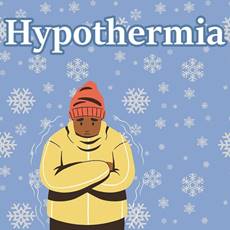Whole Grain Health Benefits
Whole Grain & Your Health
Fact Checked
×All the content published in our website is fact checked to validate its accuracy.
Visit our guidelines web page to learn more about our strict processes regarding how we review our content's sources: reliable and reputable journals, media websites, universities, colleges, organizations, and professionals.
Our articles are based on scientific evidence, and the references are included in their footnotes, which are clickable links to sound scientific papers.
First published: 05. Jan.2025
Overview
Human beings have eaten whole grains since before the advent of agriculture some 10,000 years ago, gathering ears of wild cereals and later cultivating them. It was only during the past 150 years that refined grain products appeared and almost completely displaced whole grains from the diet. This switch from whole to refined grain has had a negative impact on human health.
Refined grains lack the fiber, minerals, vitamins, and phytochemicals of the grain kernel's bran and germ, losing nutritional value.
This article will look into grains, whole and refined grains, dietary sources, recommended daily intakes, and the beneficial effects of whole grains.
And this I know, moreover, that to the human body it makes a great difference whether the bread be fine or coarse; of wheat with or without the hull... Hippocrates 4th century BC On Ancient Medicine
References and Further Reading
(1) Peter R. Shewry, Sandra Hey,, (2020). Do "ancient" wheat species differ from modern bread wheat in their contents of bioactive components?. Journal of Cereal Science, Vol 65, pp 236-243, ISSN 0733-5210, https://doi.org/10.1016/j.jcs.2015.07.014.
(2) U.S. Department of Agriculture and U.S. Department of Health and Human Services, (2020). Dietary Guidelines for Americans, 2020-2025. 9th Edition. December 2020. Available at DietaryGuidelines.gov
(3) Du, Mengxi et al., (2022). Whole-grain food intake among US adults, based on different definitions of whole-grain foods, NHANES 2003–2018. The American Journal of Clinical Nutrition, Volume 116, Issue 6, 1704 - 1714
(4) Cecilie Kyrø, ,Anne Tjønneland, (2016). Whole grains and public health. BMJ 2016; 353 doi: https://doi.org/10.1136/bmj.i3046 (Published 14 June 2016)
(5) Frølich W, Aman P, Tetens I., (2013). Whole grain foods and health - a Scandinavian perspective. Food Nutr Res. 2013;57. doi: 10.3402/fnr.v57i0.18503. Epub 2013 Feb 12. PMID: 23411562
(6) Ahluwalia N, Herrick KA, Terry AL, Hughes JP., (2019). Contribution of whole grains to total grains intake among adults aged 20 and over: United States, 2013–2016. NCHS Data Brief, no 341. Hyattsville, MD: National Center for Health Statistics
(7) Slavin J., (2004). Whole grains and human health. Nutr Res Rev. 2004 Jun;17(1):99-110. doi: 10.1079/NRR200374. PMID: 19079919
(8) Aune D, Keum N, Giovannucci E, Fadnes L T, Boffetta P, Greenwood D C et al., (2016). Whole grain consumption and risk of cardiovascular disease, cancer, and all cause and cause specific mortality: systematic review and dose-response meta-analysis of prospective studies. BMJ 2016; 353 :i2716 doi:10.1136/bmj.i2716
About this Article
Whole Grain Health Benefits, A. Whittall
©2025 Fit-and-Well.com. First Published: 05.Jan.2025. Update scheduled for 05.Jan.2028. https://www.fit-and-well.com/fitness/whole-grain.html
Tags: fiber, grain, whole grain, refined grain





